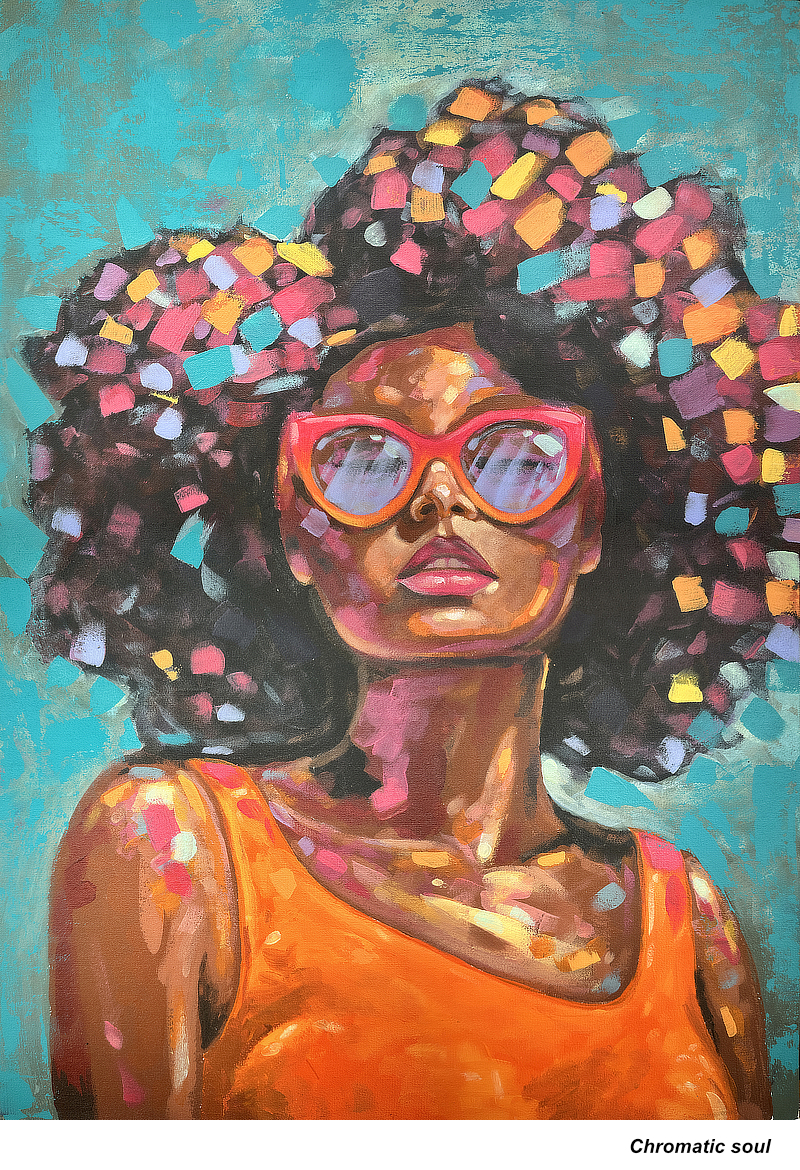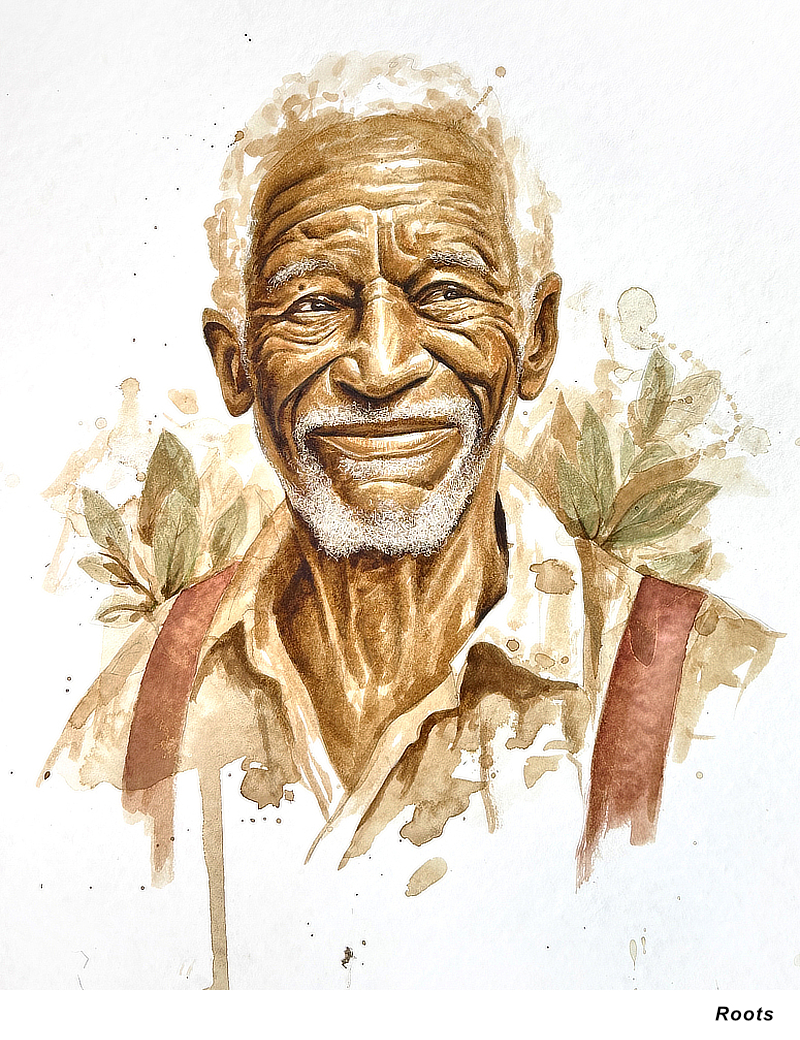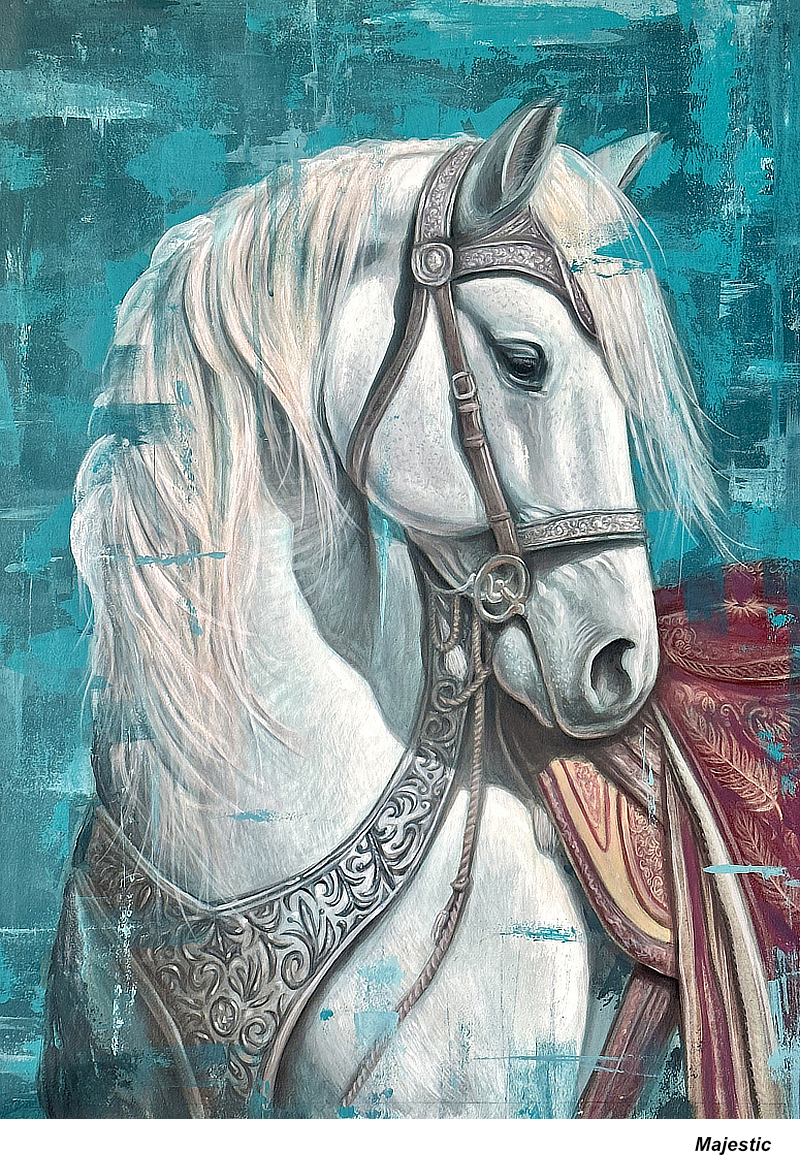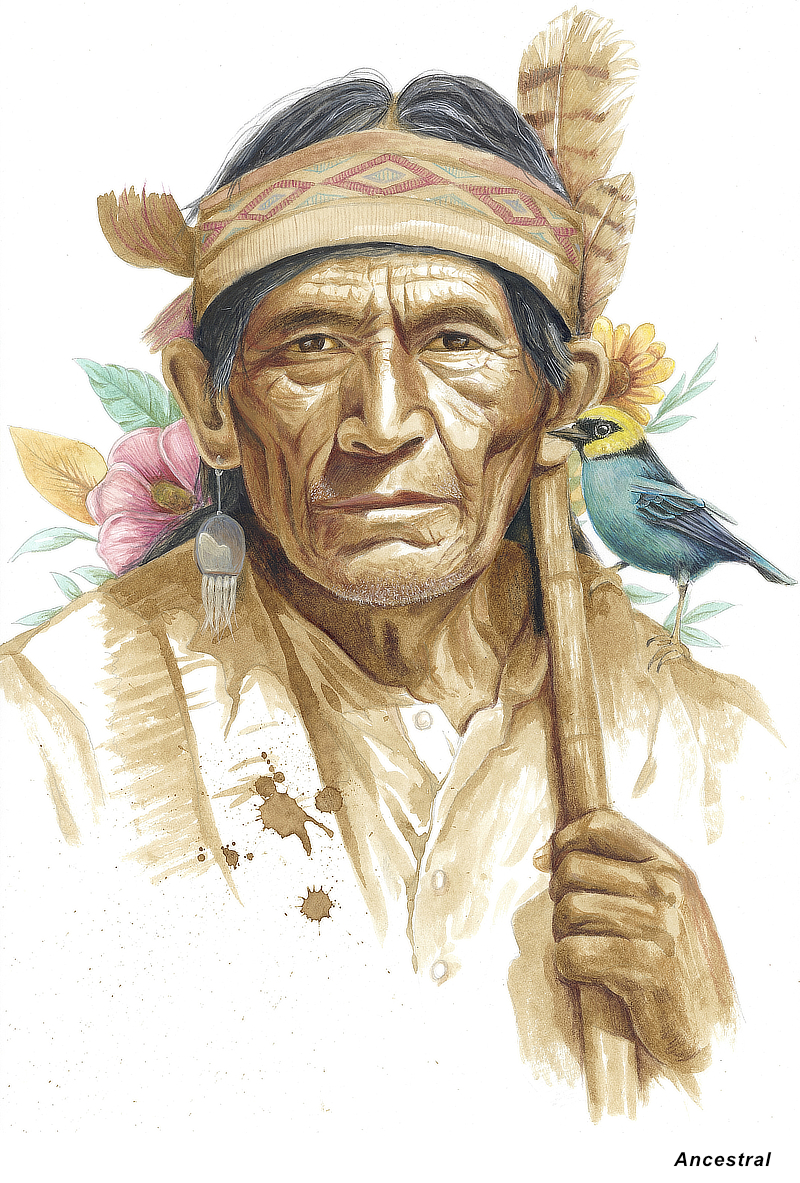
Tell a little bit about how you first got into creating art.
I've thought of myself as an artist for as long as I can remember. As a child I was always restless and curious. Growing up, I've always been creative, even though I've worked in so many other fields before becoming a professional artist. I studied graphic design, which is not a fine art degree, but it is related, and I was able to dedicate myself to art direction and creativity for 20 years. During this time I also trained as a comedian, so humor sometimes appears in my paintings to convey a playful message.I felt fulfilled living a creative life; it was the pressures of the advertising world that eventually wore me down. I decided to go into business for myself in the food industry, where I could use my creativity, humor and experience as a designer, illustrator and communicator.
I complemented my knowledge with a short career in culinary arts, although I never stopped creating, whether it was illustrating, inventing dishes or performing on stage. My deep connection with art began few years ago. After a very difficult bereavement, my soul found refuge in artistic exploration, and this led me to delve deeper into human possibilities. After that I couldn't stop painting.
I even graduated as an art therapist to better understand what was behind this profound healing process.

What inspires me most is to connect with the sense of “beauty” of imperfection in all its expressions
What is your source of inspiration?
Without a doubt, what inspires me most is to connect with the sense of 'beauty' of imperfection in all its expressions. The interesting thing is that it's everywhere, it's just that this world is moving very fast. Looking at life as an artist has taught me to pause... and really observe. In this sense, nature offers the greatest possible range of boundless creativity in motion. The branches dance in the wind. The trees bloom to invite birds and insects. The rivers flow. You only have to look around to find an inexhaustible source of inspiration.
I rethought my life plan when I got married and came to live in Colombia, at the same time as going through my last bereavement. I live in the countryside, my office/studio is a coffee plantation and my art supplies fit into a cup of coffee. Curiosity has led me to try different techniques, including coffee. I find birdsong as an inherent source of inspiration in my creative process, but also the people of the coffee-growing region, the workers and the social aspect enrich my personal and artistic vision.

My experiences mark the path of my artistic exploration according to my spiritual movements
What themes does your work involve?
Thematically, I prefer not to pigeonhole myself into a single concept; my experiences mark the path of my artistic exploration according to my spiritual movements. Although the diversity of my work combines some aspects that highlight the sense of (co-)existence. My practice is divided into two languages that celebrate diversity as a creative force: Coffee Line and Acrylic Line.
I work with coffee ink to honor that which the world marginalizes. Each stain comes from beans from distant and ancient cultures, cultivated with local tradition and harvested by anonymous hands.
Coffee is not just a pigment: it is a symbol of diaspora. Its cracks and oxidation trace maps of identities that migrate, mix and resist homogenization. In these pieces, faces of different races and animal species emerge from earthy backgrounds, blurring or reappearing as a reminder that all existence is a temporary loan from the earth.
My vibrant acrylics are a hymn to co-existence without hierarchies. I use colorful tones to construct compositions where people, animals and symbols of different faiths intertwine with emotions that know no boundaries. There are no shadows or forced perspectives: the yellow that embraces urban anxiety and the turquoise that dazzles hope coexist with the lilac of broken dreams, like a chorus where the intimate and the collective share a single staff.

Both lines, although opposed in method, share a question: How to paint the beauty of diversity without erasing its rough edges?
Coffee, with its fragility, reminds us that even the ephemeral deserves to be archived. Acrylics, with their fierceness, demand that diversity is not tolerated but celebrated.
Together they are my alchemy of belonging: a call to see the world not as a jigsaw puzzle to be put together, but as a forest where roots, branches and fruits grow from the earth itself and eventually return to it, just as water grows from the clouds after completing its cycle and the body fades after its last breath. Everything returns to the earth.
What is your favorite art accident? Did it change your perspective?
To answer this question, I would have to go back to coffee. It was a accident that led me to experiment with this ink.
After spilling some coffee in my journal, I noticed that it adhered incredibly well with the texture of the paper and can create unique sepia tones, using various techniques that give it a peculiar look. This variety of rich tones, textures and shapes allows me to express emotions, ideas and concepts that are reflected in the details: wrinkles on tired faces, hard-working hands or lost gazes.
My work is now born from a forced accident, telling a story from the natural chaos formed by drops and splashes as they find their disordered yet perfect path.


